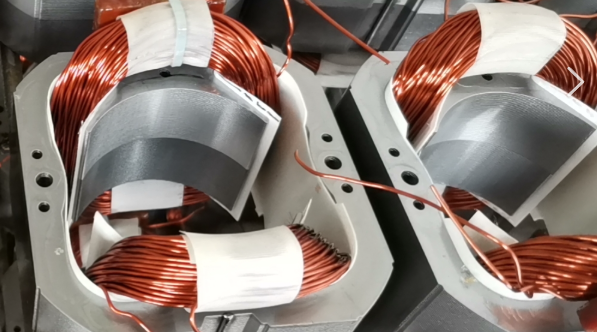What are the common control unit failures and solutions for series excitation motor motor stator paint dripping machine?
What are the common control unit failures and solutions for series-excited motor-motor stator paint dripping machine?
1, controller hardware failure
Failure phenomenon:
The control unit can not start or run normally, resulting in the paralysis of the whole paint dripping machine system.
Some of the functions of the control unit fail, such as not being able to control the amount of paint dripping, temperature, speed and other parameters.
The indicator light of the control unit flashes abnormally or does not light up, and it can not visually display the operation status of the equipment.
Solution:
Check whether the power supply of the control unit is normal, including whether the power cord is firmly connected, whether the power switch is turned on, whether the fuse is blown, etc., and if there is any problem, repair or replace it in time.
Open the shell of the control unit and check whether there is obvious damage to the internal circuit board, such as burnt components, short circuit, desoldering, etc. If there is a need to replace the damaged circuit board or components.
Use professional testing equipment, such as multimeters, oscilloscopes, etc., to test the key signals and parameters of the control unit to determine the point of failure and repair.

2、Control program failure
Fault phenomenon:
The operation program of the paint dripping machine has errors or loopholes, resulting in the equipment not being able to work according to the preset parameters and processes.
The control program is dead or stuck, affecting production efficiency and product quality.
The version of the control program is incompatible, and other equipment or software can not communicate and work together normally.
Solution:
Reprogram or update the control program, fix known errors and vulnerabilities, and optimize the performance and stability of the program.
Check whether the running environment of the control program, including the operating system, driver, etc., is compatible with the program, and promptly upgrade or replace it if there is any incompatibility.
In the process of program operation, timely record and feedback problems and abnormalities, so that the developers can carry out targeted repair and improvement.
3、Sensor signal failure
Fault phenomenon:
Sensor signals can not be normally transmitted to the control unit, resulting in the control unit can not obtain accurate information on the operating status of the equipment.
Sensor signals are affected by interference or noise, so that the control unit receives the wrong information, so as to make the wrong control decisions.
Solution:
Check whether the connection line between the sensor and the control unit is loose, broken or short-circuited, and repair or replace the line in time if there is any problem.
Filter and anti-interference processing of the sensor signal, such as adding filters, shielded wires, etc., to reduce the impact of external interference and noise.
Check the working status and performance of the sensor, if any damage or aging in time to replace the sensor.
4, communication failure
Fault phenomenon:
Communication between the control unit and other equipment is interrupted or unstable, such as with the host computer, PLC, inverter and other equipment can not communicate normally.
Communication data errors or loss, resulting in problems with the cooperative work between the devices.
Solution:
Check whether the connection of the communication line is firm and whether the communication interface is damaged, and repair or replace it in time if there is any problem.
Check whether the settings of the communication protocol are correct, and ensure that the same communication protocol and parameters are used between the control unit and other devices.
Restart or reset the communication equipment to clear the possible communication faults.
5, human-machine interface failure
Fault phenomenon:
The display of the human-machine interface has black screen, splash screen, crash and other phenomena, and can not normally display the operating status and operation interface of the equipment.
The operation buttons of the man-machine interface are unresponsive or unresponsive, unable to carry out normal parameter setting and operation control.
Solution:
Check whether the power supply of the HMI is normal, whether the connection line of the display is loose, and repair it in time if there is any problem.
Update or reinstall the software of the HMI to repair possible software failures.
Clean the display and operation buttons of the HMI to prevent dust, oil and other impurities from affecting its normal operation.
※ If you still can't solve the problem by the above ways and means, please contact the technical specialists of Xinhui Electromechanical Equipment Co., Ltd. through the page chat tool to seek help.







